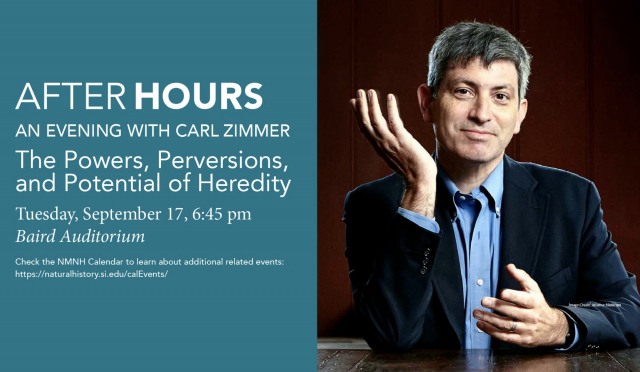Greetings! I wanted to get this update out in time to let folks in Washington DC know that I’ll be speaking about She Has Her Mother’s Laugh at the Smithsonian Institute on Tuesday. I’ll be in conversation with Kirk Johnson, the director of the National Museum of Natural History. Please join us! Details can be found here.
Mini-Brains in Space and More
Here are a few things I wrote for the New York Times since my last newsletter:
“Scientists Find the Skull of Humanity’s Ancestor, on a Computer “
“Why Aren’t Cancer Drugs Better? The Targets Might Be Wrong”
“Organoids Are Not Brains. How Are They Making Brain Waves? “
Upcoming Talks
September 17, 2019 Washington, DC. Smithsonian. “An Evening With Carl Zimmer.”
October 12, 2019 Morristown, NJ. Morristown Festival of Books.
October 16, 2019 Boston, MA. Allen Frontiers Symposium. Keynote address.
October 23, 2019 San Francisco. Arts & Ideas at the JCCSF–in conversation with author Annalee Newitz.
October 24, 2019 San Francisco. The Exploratorium.
November 9, 2019 Charleston, SC. Charleston To Charleston Literary Festival
December 3, 2019 Nashville. Vanderbilt University. Chancellor Lecture Series.
My latest book, She Has Her Mother’s Laugh, is now out in paperback. You can order it now from fine book mongers, including Amazon, Barnes and Noble, BAM, Hudson Booksellers, and IndieBound.
You can find information and ordering links for all my books here. You can also follow me on Twitter, Facebook, Goodreads, and LinkedIn. If someone forwarded this email to you, you can subscribe to it here.
Best wishes, Carl
Originally published September 15, 2019. Copyright 2019 Carl Zimmer.
